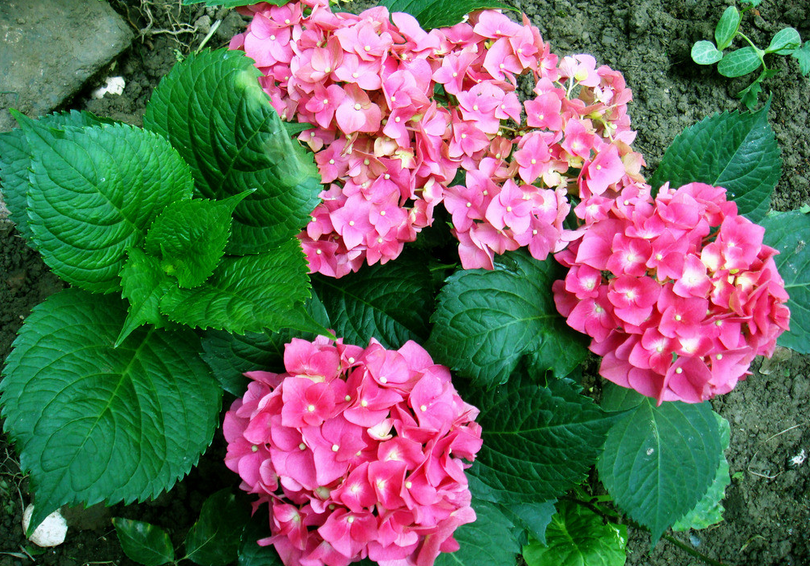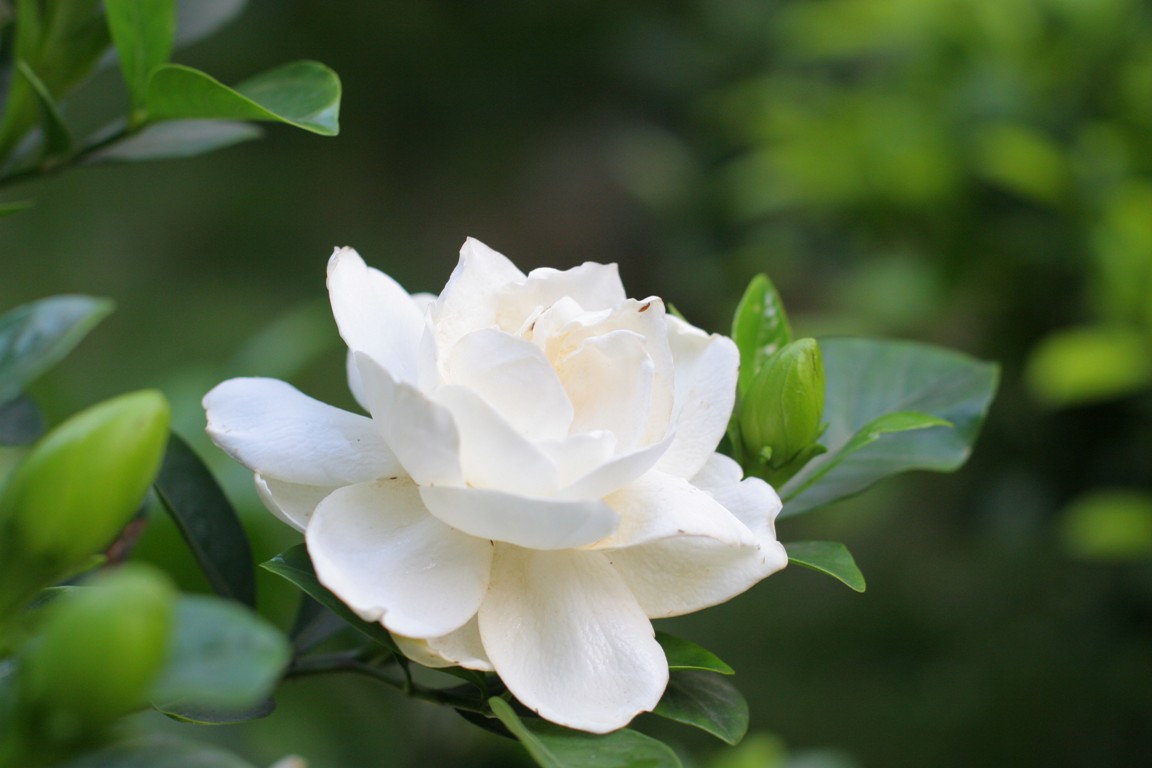Culture methods and matters needing attention of Hydrangea
Hydrangea is a common garden flower, its umbels such as snowballs, clustered in oval green leaves, very beautiful. A decoration network Xiaobian reminds you that when breeding hydrangea, you must first master certain relevant knowledge, the following and a decoration network Xiaobian to understand in detail.

The cultivation method of hydrangea and its precautions
Culture method of hydrangea
1. Soil: Hydrangea planting soil is loose, fertile and well drained sandy loam. But the change of soil pH makes the flower color of hydrangea change greatly. To deepen the blue color, aluminum sulfate can be applied during bud formation. Lime can be added to the soil to keep it pink.
2. Sunshine: Hydrangea is a short-day plant, which needs to be treated in darkness for more than 10 hours every day, about 45 to 50 days to form flower buds. Usually cultivation should avoid the sun irradiation, 60%~70% shade is the most ideal.
3, temperature: hydrangea like warm environment, growth temperature is 18~28℃, winter temperature is not lower than 5℃. The temperature of 20℃ can promote flowering, and the temperature of 16℃ after flowering can prolong flowering, but high temperature makes flowers fade quickly.
4, watering: hydrangea leaves hypertrophy, luxuriant branches and leaves, water demand is more, in the spring, summer and autumn of the growing season, to irrigate enough water to keep the pot soil often moist. Summer weather is hot, water evaporation is large, not only watering, but also spraying water to the leaves every day. Hydrangea root for the fleshy roots, watering can not be excessive, bogey basin water. After September, the weather turns cool, so gradually reduce the amount of watering.
5. Fertilization: Hydrangea likes fertilizer. During its growth period, it usually applies decomposed thin cake fertilizer water every 15 days. In order to maintain the acidity of the soil, 1%-3% ferrous sulfate can be added to the fertilizer solution. Regular irrigation alum fertilizer water, can make the plant branches multiply leaves green. Adding potassium dihydrogen phosphate 1-2 times during bud stage can make flowers bigger and more colorful. Cake fertilizer should be applied to avoid the hot days, so as not to cause pests and damage to the roots.
6. Pests: Hydrangea mainly has wilt disease, powdery mildew and leaf spot disease, which is controlled by spraying 600 times solution of 65% zinc wettable powder. Insect pests have aphids and bugs harm, available 40% omethoate EC 1500 times spray kill.
7, pruning: hydrangea growth exuberant, so that potted hydrangea crown beauty, more flowers, it is necessary to trim the plants. Generally, after the seedlings survive, they grow to 10-15 cm high, that is, they are taken from the heart to make the lower axillary buds germinate.
Notice of hydrangea cultivation
Fertilization: Hydrangea flowering period for 6~7 months, flowering period fertilizer water to be sufficient, fertilization once every half month.
Watering points: Hydrangea planting pot soil to keep wet, but watering should not be too much, especially in rainy season to pay attention to drainage, prevent waterlogging caused by rotten roots. Winter indoor potted plants to a little dry as well. Too much moisture makes the leaves decay easily.
Pruning essentials: hydrangea flower after flowering to pay attention to remove the flower stem, promote the production of new branches, appropriate pruning, can maintain the beautiful shape of the plant.
Pot soil replacement: potted hydrangea, generally to turn the pot for soil once a year. It is advisable to turn over pots and change soil in early March. When changing pots, prune the roots of the plants, cutting off rotten roots, rotten roots and long roots. After the plants are moved into new pots, the soil should be compacted, watered, placed in shade for about 10 days, and then moved outdoors for normal management.
Propagation points: hydrangea commonly used cuttage, ramets, layering and other ways of reproduction, can be carried out during the plum rain in early spring.
Aquaculture methods and precautions of hydrangea
Hydrangea is native to Japan and Sichuan, China. It grows in valley stream or mountain top sparse forest. In Asia, mainly Japan is rich in hydrangea, hydrangea varieties in horticultural shops, you can see many exotic new varieties, expensive, generally as a family potted viewing. Today, we will briefly introduce the cultivation methods and precautions of hydrangea. Hydrangea cultivation methods Soil requirements: Hydrangea planting soil to loose, fertile and good drainage of sandy loam for good. But the color is affected by soil pH, acid soil flowers are blue, alkaline soil flowers are red. Lighting conditions: Hydrangea is a short-day plant, usually cultivated to avoid the sun, 60%~70% shade is the most ideal. Appropriate shade can prolong the flowering period in summer when the light is too strong. Temperature conditions: Hydrangea growth temperature of 18-28℃, winter temperature is not lower than 5℃. Flower bud differentiation needs 6-8 weeks at 5-7℃. 20℃ can promote flowering, and maintain 16℃ after flowering can prolong flowering period. Watering method: Hydrangea planting pot soil to keep wet, but watering should not be too much, especially in rainy season to pay attention to drainage, prevent waterlogging caused by rotten roots. Winter indoor potted to a little dry as well, too wet leaves are perishable. Conservation management: Hydrangea flower flowering for June-July, flowering period to be sufficient fertilizer, fertilizer once every half month. After the ugly hydrangea flower blooms, pay attention to removing the flower stem, promote the production of new branches, properly pruned, can maintain the beautiful shape of the plant. Pest control: Hydrangea mainly has wilting disease, powdery mildew and leaf spot disease. 600 times solution of 65% Zineb WP was sprayed to control it. Insect pests have aphids and bugs harm, available 40% omethoate EC 1500 times spray kill. Notice of hydrangea cultivation Hydrangea like acid soil, barren and saline-alkali soil intolerance. Poor growth in alkaline soil, yellow branches and leaves, suitable for loose, fertile, humus-rich acidic soil. Its color due to the influence of pH, can be changed from white to red, from red to blue. Hydrangea in the growth period of a year, generally can hit the top 2 times, promote branching. After hydrangea flowers bloom, the old branches will be kept 1 -2 nodes cut short to control plant height and promote new branches. After autumn, cut off the top of the new shoots to stop the growth of the branches, so as to facilitate the winter.
Home Hydrangea breeding methods and precautions
Hydrangea, our daily life is a very common plant flowers, because its flower type like a ball is generally known as hydrangea, looks very cute and gorgeous, so many people are very like. Like to have, so many people want to breed some hydrangea at home, and then very curious hydrangea breeding methods and precautions. So how to raise hydrangea, hydrangea breeding methods and precautions are what?
More Home Plant Cultivation Coreopsis Cultivation Method Zinnia Cultivation Method Sunflower cultivation method
A brief introduction to hydrangea
Hydrangea, also known as hydrangea or pink flower, is a flower type for umbrella-shaped flowers, from a distance looks like a cluster of balls together in general, so people call it hydrangea. It is a shrub plant belonging to Hydrangea genus of Saxifraga family. Its net height is about 1 to 4 meters. Its flowering period is concentrated in June to August in summer. The plant flowers form umbrella-shaped cymes with rich colors. Common ones are pink, light blue, white and red. It looks very beautiful and lovely. It has high ornamental value and is deeply loved by people.
Culture method of hydrangea
1. Soil: Hydrangea flower color will be affected by soil pH, so planting needs to choose loose and breathable fertile sandy loam. If you want flower color to be blue, you can choose acidic soil, and red flowers can choose alkaline soil.
2, temperature: hydrangea is not cold-resistant, its growth temperature is about 18 to 28 degrees, winter culture temperature can not be lower than 5 degrees, while hydrangea will bloom in about 20 degrees environment, and plant flower bud differentiation needs to maintain 5 to 7 degrees temperature.
3, light: Hydrangea is a typical short-day plants, summer needs appropriate shade, its shade reaches 60 to 70 percent is the most appropriate, while sunshine farming needs to avoid the sun.
4. Watering: Hydrangea has a low demand for water, and it can be kept moist in daily cultivation. The amount of watering is moderate and not much.
Fertilization: Usually hydrangea fertilization is not too much, to the flowering time you need more fertilization, to maintain sufficient fertilizer, especially in June to July this period of time every half month need to fertilize once.
Hydrangea breeding precautions
1, pruning plastic: hydrangea flowers big color beauty, has always been one of the very famous ornamental plants. Therefore, it is necessary to pay attention to the tree shape of plants during daily cultivation, and carry out appropriate pruning and shaping work at necessary times. Especially when the plant grows to about 10 to 15 cm high, it needs to be picked. After flowering, the old branches need to be trimmed short, and the flower stems removed at the same time, so as to promote the plant to grow new branches and keep the plant type beautiful.
2, pest control: hydrangea common diseases and insect pests are not many, mainly wilt disease and powdery mildew and leaf spot disease these three kinds. When encountering diseases, spraying 600 times solution of 65% zebrazine wettable powder can be used for prevention and control. If there are aphids or mirid pests during breeding, spraying plants with 40% omethoate EC 1500 times can also be treated well.
3, change the soil pot: Hydrangea generally need to change the soil pot once every other year, so as to better promote the growth of plants. The best time to turn the pot is early March in early spring. The new soil for soil replacement can be purchased from the market, or mixed with 4 wind leaf soil and garden soil and 2 wind sand soil. In order to maintain soil fertility, you can also add a proper amount of decomposed cake fertilizer as base fertilizer.
Summary: Hydrangea breeding difficulty is not very high, so even at home breeding is also a very simple thing, as long as the correct breeding methods, do a good job of breeding precautions, hydrangea will always raise very good.
- Prev

How to raise mimosa the culture method of mimosa
Many people want to raise mimosa on their own, but they don't know what to do. The editor of the decoration network reminds you that when cultivating mimosa, you must first master some relevant knowledge. Here, let's take a detailed look at the culture method of mimosa with the editor of the decoration network.
- Next

What if the leaves of gardenia turn yellow?
Gardenia likes a warm, moist semi-shady environment, slightly shady, afraid of strong light exposure, suitable for summer in a cool place or in the shade of flowers, etc., with scattered light to maintain. Gardenia, also known as Gardenia jasminoides, yellow gardenia, is an evergreen shrub of Rubiaceae, Rubiaceae and Gardenia, native to China.
Related
- Fuxing push coffee new agricultural production and marketing class: lack of small-scale processing plants
- Jujube rice field leisure farm deep ploughing Yilan for five years to create a space for organic food and play
- Nongyu Farm-A trial of organic papaya for brave women with advanced technology
- Four points for attention in the prevention and control of diseases and insect pests of edible fungi
- How to add nutrient solution to Edible Fungi
- Is there any good way to control edible fungus mites?
- Open Inoculation Technology of Edible Fungi
- Is there any clever way to use fertilizer for edible fungus in winter?
- What agents are used to kill the pathogens of edible fungi in the mushroom shed?
- Rapid drying of Edible Fungi

